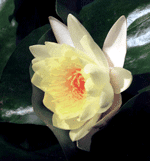Sunyata, or how to untie what has never been tied. ~Emptiness.Although some medieval and modern Tibetan histories written by cloistered Buddhist monks portray the ancient pre-Buddhist religion of Tibet as a nefarious mixture of sorcery, black magic, shamanism, and bloody sacrifices, this appears to be just so much anti-Bon-po propaganda providing a melodramatic effect. The principal aim of these Buddhist historians was to glorify the role of Indian Mahayana Buddhism in Tibetan history, suggesting that there was no culture nor civilization in Tibet before the coming of Indian Buddhism to Central Tibet...
Another problem is that the Tibetan term
Bon, probably deriving from the old verb form 'bond-pa, meaning
to invoke the gods, has two different cultural references. In the first usage,
Bon does indeed refer to the indigenous, pre-Buddhist, shamanistic, and animistic culture of Tibet, a culture that possessed many characteristics in common with other shamanistic tribal cultures of Central Asia and Siberia.
Although these cultures involved various types of religious practice and belief,the central role was occupied by a practitioner known as a shaman. The activity of the shaman was definitively characterized as entering into an altered state of consciousness by way of chanting, drumming, dancing, and so on, whether this altered state of consciousness or "ecstasy" was understood to be
soul-travel, as an out-of-the-body experience, or a form of
spirit possession.The principal social function of such a practitioner was healing.A traditional form of Central Asian shamanism involving spirit possession continues to be practiced widely in Tibet even today among both Buddhist and Bon-po populations, as well as among Tibetan refugees living elsewhere in Ladakh, Nepal, and Bhutan.
Such a practitioner is known as a lha-pa or dpa'-bo.Elsewhere on the borders of Tibet in the Himalayasand along the Sino-Tibetan frontiers, among certain Tibetan speaking, and related peoples, there exist shamanic practitioners known as
Bon-pos; for example, among
the Na-khi in China, and among
the Tamangs in Nepal... there exists a second type of religious culture also known as
"Bon" whose adherents claim to represent the pre-Buddhist civilization of Tibet.
This form of Bon is known also as Yungdrung Bon (g.yung-drung bon); these practitioners of Bon assert that at least part of their religious tradition was not native to Tibet,
but was brought to Central Tibet sometime before the seventh century from the previously independent country of Zhang-zhung, west of Tibet, and more remotely from Tazik (stag-gzig) or Iranian speaking Central Asia to the northwest."The Eternal Teaching," a term which could be reconstructed into Sanskrit as "Svastika-dharma," where the swastika or sun-cross is the symbol of the eternal and the indestructible,
corresponding in most every respect to the Buddhist term vajra or diamond (rdo-rje). In addition to ritual texts relating to shamanic and animistic practices, this ancient tradition possesses a large body of texts, also claiming to be pre-Buddhist in origin, relating to the higher teachings of
Sutra, Tantra, and Dzogchen (mdo rgyud man-ngag gsum).
The Bon-po Lamas, instead of looking back to the North Indian prince, Siddhartha Gautama, as their Buddha, looked instead elsewhere as the source of their higher teachings of Sutra, Tantra, and Dzogchen. To the outsider, this
Yungdrung Bon nowadays appears little different from the other schools of
Tibetan Buddhism in terms of their higher doctrines and monastic practices.
Contemporary Bon possesses a monastic system much like the Buddhist one and a Madhyamaka philosophy fully comparable with the other Tibetan Buddhist schools. In contrast,
Old Bon (bon rnying-ma), or
Yundrung Bon as such, consists of the teachings and the practices attributed to Shenrab Miwoche, and in particular, this means the higher teachings of
Sutra, Tantra, and Dzogchen.These teachings are said to have been brought to the country of Zhang-zhungin Western and Northern Tibet where they were translated into the
Zhang-zhung language. Zhang-zhung appears to have been an actual language, distinct from Tibetan, and apparently related to the West Himalayan dialect of Kinauri.
The Bon-po tradition possesses as its highest teaching, a system of contemplation known as Dzogchen, "the Great Perfection."
These teachings reveal in one's immediate experience the Primordial State (ye gzhi) of the individual, that is to say, the individual's inherent Buddha-nature or Bodhichitta, which is beyond
all time and conditioning, and conceptual limitations (time and space, as previously discussed in posts).
This Natural State (gnas-lugs), is spoken of in terms of its intrinsic, primordial purity (ka-dag) .
Both the Buddhist Nyingmapas and the Bonpos assert that their respective Dzogchen traditions were brought to Central Tibet in the eighth century: the
Nyingmapa transmission from the Mahasiddha Shrisimha in living in Northern India, and the
Bonpo transmission from a line of Mahasiddhas dwelling around Mount Kailas and the lake country of Zhang-zhung.
Thus there appear to exist
two different historically authentic lineages for the transmission of these teachings... the historical origins of
Bon-po Dzogchen, for this second authentic lineage of the Dzogchen teachings also did not originate in India proper, but was brought to Central Tibet in the ninth and tenth centuries.
Until the eighth century, Zhang-zhung had been an independent kingdomwith its own language and culture. It lay in what is now Western and Northern Tibet, and the center of the country was dominated by the majestic presence of the sacred mountain of Gangchen Tise or Mount Kailas.
Examining the available evidence,
it now appears likely that before Indian Buddhism came to Central Tibet in the seventh and eighth centuries. Zhang-zhung had extensive contacts with the Buddhist cultures that flourished around it in Central Asia, and in the Indo-Tibetan borderlands.
Just to the west of Zhang-zhung, there once existed the vast Kushana empire which was Buddhist in its religious culture. It was an area in which Indian Buddhism interacted with various strands of
Iranian religion-- Zoroastrian, Zurvanist, Mithraist, Manichean, as well as Indian Shaivism and Nestorian Christianity. Some scholars have seen this region beyond India as playing a key role in the development of certain aspects of
Mahayana Buddhism, and later also in the development of
a Tantric form of Buddhism known as Vajrayana.
This Buddhism, known as "gyer" in the Zhang-zhung language and as Bon in the Tibetan language,was not particularly
monastic, but more Tantric in nature, and its spread was increased by the presence of various practitioners in the region... Into this century, Kailas remains an important site of pilgrimage drawing
Hindu sadhus and yogis from India...
Such a mixed Buddhist-like culture, being both Tantric and Shamanic, was suppressed in the eighth century at the instigation of the Tibetan king, Trisong Detsan, the last king of Zhang-zhung, Ligmigya.
Within modern Buddhism, Dzogchen is a vehicle of the Nyingma School.It’s the ninth vehicle, and it cannot be separated from the Nyingma School, or the Lineage that goes back to Garab Dorje.
However, this does not mean that the Nyingmapas own Dzogchen. Nor does it mean that the Bönpos own it. Anyone from any school can practise Dzogchen. There have been many
Lamas from all the schools who have practiced Dzogchen; in fact several
Dala’i Lamas have been
Dzogchen masters, such as the Great Fifth Dala’i Lama. Any discussion of the origin of Dzogchen will include a mention that it comes from the Nyingma Lineages. And it also comes from the Bön-pos.
This tradition has also received explicit support from His Holiness the Dalai Lama,who made a statement at the 1988 Tulku Conference in Sarnath in which he stressed the importance of preserving the Bön tradition, as representing the indigenous source of Tibetan culture, and acknowledging the major role it has had in shaping Tibet's unique identity.
Sources:
http://www.bonfoundation.org/aboutbon.html
www.angelfire.com/vt/vajranatha/bondzog.html
www. tibet.com





